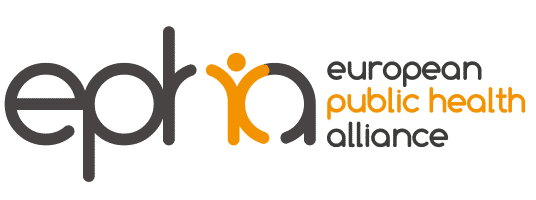Image by https://rebcenter-moscow.ru/ (Own work) CC BY-SA 4.0 via Wikimedia Commons
By Marine Faure & Charlotta Pisinger, European Respiratory Society
Back in the 1960s, when smoking was more popular, cigarettes were used as fashion accessories and models, writers and other media personalities would not hesitate to pose either holding or smoking a cigarette. Yet, this was also the period when public concerns about smoking and health began to rise. As a result, in the 1980’s tobacco companies developed a brand-new type of cigarettes promoted as “light” and “low-tar”. Tobacco advertising created the perception that a healthier cigarette was available on the market [1] and very quickly, many smokers identified the so-called ‘light’ cigarette as a safe alternative to smoking. [1] Studies have since shown that the risk of serious health effects was not actually lower for smokers of “light” and “low-tar” cigarettes and indeed sometimes increased. [2] [3]. More recently, the continuing global decline in tobacco consumption has led the tobacco industry to introduce and massively advertise new “heated tobacco products” that they claim to be significantly less harmful that traditional cigarettes. Given the history of tobacco companies using reduced exposure to mislead smokers who want to quit, it is important to evaluate, in the light of the existing scientific evidence, what really are heated tobacco products and their impact on consumers’ health.
Based on current science-based evidence, we can conclude that heated tobacco products are not harmless, as claimed by the tobacco industry. Even if they turn out to be less harmful than conventional cigarettes, they might have a negative impact on public health. [4] [5] [6] [7] These products were introduced for the same reasons as “low tar” and “light” cigarettes: to prevent smokers from quitting and attract non-smokers. Just like regular tobacco smoking and smokeless tobacco, they remain addictive and carcinogenic to humans. [8] [9] We should not allow debate around these new tobacco products to distract us from the main job at hand – promoting regulatory measures that we know are effective at reducing smoking, continue to support those who wish to stop smoking and tell smokers that the safest tobacco product on the market is the one they will never smoke.
- Cunningham R. Smoke and mirrors : the Canadian tobacco war. Note on: Creative Research group, Project Viking, Volume 11: An Attitudinal Model of Smoking, 1986, February- March, prepared for Imperial Tobacco Limited (Canada). International Development Reasearch Center1996.
- Song MA, Benowitz NL, Berman M, et al. Cigarette Filter Ventilation and its Relationship to Increasing Rates of Lung Adenocarcinoma. Journal of the National Cancer Institute 2017;109(12) doi: 10.1093/jnci/djx075 [published Online First: 2017/05/20]
- Harris JE, Thun MJ, Mondul AM, et al. Cigarette tar yields in relation to mortality from lung cancer in the cancer prevention study II prospective cohort, 1982-8. Bmj 2004;328(7431):72. doi: 10.1136/bmj.37936.585382.44 [published Online First: 2004/01/13]
- Stabbert R, Voncken P, Rustemeier K, et al. Toxicological evaluation of an electrically heated cigarette. Part 2: Chemical composition of mainstream smoke. JApplToxicol 2003;23(5):329-39.
- St Helen G, Jacob Iii P, Nardone N, et al. IQOS: examination of Philip Morris International’s claim of reduced exposure. Tob Control 2018;27(Suppl 1):s30-s36. doi: 10.1136/tobaccocontrol-2018-054321 [published Online First: 2018/08/31]
- Glantz SA. PMI’s own in vivo clinical data on biomarkers of potential harm in Americans show that IQOS is not detectably different from conventional cigarettes. Tob Control 2018 doi: 10.1136/tobaccocontrol-2018-054413 [published Online First: 2018/08/23]
- Moazed F, Chun L, Matthay MA, et al. Assessment of industry data on pulmonary and immunosuppressive effects of IQOS. Tob Control 2018;27(Suppl 1):s20-s25. doi: 10.1136/tobaccocontrol-2018-054296 [published Online First: 2018/08/31]
- WHO. International Agency for Research on Cancer. IARC Monographs on the Evaluation of Carcinogenic Risks to Humans. http://monographs.iarc.fr/ENG/Classification/ 2014 [
- IARC. IARC strenghthens its findings on several carcinogenic personal habits and household exposure, World Health Organisation, International Agency for Research on Cancer, available at http://www.iarc.fr/en/media-centre/pr/2009/pdfs/pr196_E.pdf. 02 November 2009

